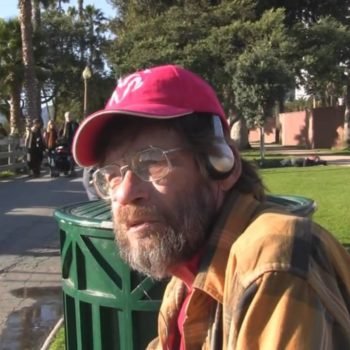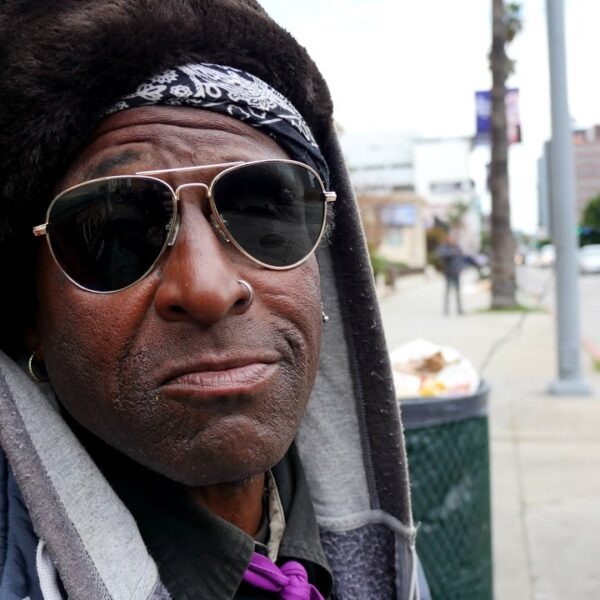The Department of Housing and Urban Development (HUD) released a new funding program on June 22 that addresses unsheltered and rural homelessness.
The program, known as the Initiative for Unsheltered and Rural Homelessness, includes $365 million in funding. More than $322 million will go toward Continuum of Care grant programs. Another $54.5 million is reserved for rural communities, specifically. It also includes $43 million to fund another 4,000 housing vouchers through local public housing agencies.
“We have a responsibility to ensure that people sleeping in their vehicles, in tents, or on the streets, including in rural areas, have access to decent, stable housing and services, like health care and treatment, to live with dignity and safety,” said HUD Secretary Marcia Fudge.
40 Percent of Homeless Population Is Unsheltered
The new funding program comes as unsheltered homelessness continues to increase across the country. According to HUD’s 2020 Homeless Assessment Report, nearly 40 percent of people experiencing homelessness across the country are unsheltered.
The 2021 report showed the unsheltered population remained largely unchanged, even though HUD did not require communities to conduct an unsheltered count.
“Solving unsheltered homelessness means delivering help to the people who need it the most but who have the hardest time reaching it,” Fudge said. “It means putting Housing First, and health care and other supportive services right after. With this funding, communities will have the resources to scale up coordinated efforts to humanely and effectively move people from encampments into homes by linking homeless outreach with health care, treatment, and housing.”
The new funding program also comes as several cities across the country revamp how they count their homeless populations.
For instance, Seattle recently began using an app called “Show the Way” to help conduct its yearly counts. The new method has also produced some startling results.
According to a report from the King County Regional Homelessness Authority, the new method counted more than 40,800 people experiencing homelessness in the Seattle metro area. In comparison, the federal Point In Time (PIT) count method counted more than 11,000 people.
The Metro Denver Homeless Initiative, a continuum of care in Denver, Colorado, also devised a new method of counting the region’s homeless. The organization compared data from the Homeless Management Information System, Medicaid, and other databases to conduct their count. It found that more than 12,000 people are homeless in the Denver metro area compared to the more than 6,000 identified using the PIT method.
“Access to a safe place to call home is essential to health and well-being,” said Department of Health and Human Services Secretary Xavier Becerra. “The Biden-Harris Administration is committed to working across the federal government to end homelessness by ensuring access to health care, support services, and permanent housing for all Americans.”
New Program Will Help Homeless Veterans
One group that stands to benefit from the new funding program is homeless veterans. According to HUD’s 2021 Homeless Assessment Report, the number of unsheltered homeless veterans increased by 10 percent year over year.
“Getting unsheltered Veterans and homeless rural Vets into houses is a top priority in the Department of Veterans Affairs’ strategy to end veteran homelessness,” said Department of Veterans Affairs Secretary Denis McDonough. “These new resources from HUD add timely new capacity to this fight. No Veteran should ever be homeless in this country, which they swore an oath to defend.”
The decrease in sheltered homelessness for military veterans comes as several communities work to reduce their veteran homeless population.
For example, St. Louis County, Minnesota, effectively ended veteran homelessness by adopting the Functional Zero model from the nonprofit Community Solutions. This model requires cities to have processes to make homelessness brief and one-time for specific groups.
“Aspirational goals without a plan don’t get us to where we need to go,” said Governor Tim Walz. “We said we’re going to become the fourth state because it is a reflection of Minnesota values, and we’ve got a plan on how to do this.”
Other places, such as Nevada County, California, and Fremont County, Colorado, have also adopted the same model and have effectively ended homelessness for their veterans.
How You Can Help
The pandemic proved that we need to rethink housing in the U.S. It also showed that programs designed to improve homeless counts could help local authorities budget sufficient funds for homeless resolution programs and clear guidance on spending aid dollars.
Contact your officials and representatives. Tell them you support keeping many of the pandemic-related aid programs in place for future use. They have proven effective at keeping people housed, which is the first step to ending homelessness.













